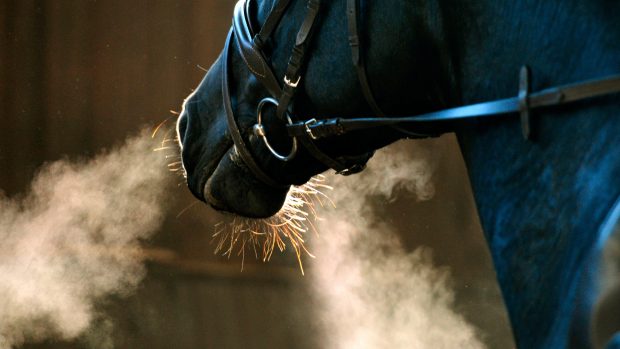What’s the first thing you do when you’re feeling poorly? Maybe lie down, take pain relief or seek medical advice. As prey animals, a horse’s natural instinct is to suffer in silence rather than highlight that they are ill and attract unwanted attention.
So whether you’ve owned horses for years or will soon be buying your first, remembering to make the following checks on a daily basis will ensure you know what is normal for your horse. This, says H&H vet consultant Karen Coumbe MRCVS, will enable you to spot the subtle signs that something is wrong.
1. Respiratory
What is normal?
8-16 breaths per minute.
How do you monitor it?
– Watch your horse’s chest move in and out. An inhale and exhale counts as one breath.
– Alternatively, look for air coming out of the nostrils — but this will only work on a cold day.
– “A healthy horse at rest has quiet, steady breathing. Knowing what is normal for your horse makes it easier to spot when it is laboured,” says Karen.
2. Temperature
What is normal?
Less than 38.5°C.
Consistently higher than normal temperature readings are likely to be associated with infection and inflammation, and you should isolate the horse and call your vet. A transiently higher than normal temperature reading can be associated with exercise and overheating, but if it remains high it needs to be taken seriously.
How do you monitor it?
– A rectal temperature reading is the most accurate. A rapid digital thermometer is quick and easy to use, only taking 10 seconds to register a reading and bleeping to alert that it has been recorded.
– “The more regularly this is done the better your horse will cope with the procedure. It helps if they are used to temperature checking regularly, starting when they are young foals,” states Karen.
3. Pulse
What is normal?
Between 30 and 36 beats per minute (bpm).
A horse’s pulse is affected by pain, fear, shock, fever and exercise. “In some horses their resting pulse can be between 24 and 40 beats, so it’s variable,” explains Karen, “but if it’s consistently high [over 60bpm] or pounding, something is seriously wrong.”
How do you monitor it?
-Press two fingers (not your thumb) on the horse’s jaw, where the submandibular artery runs.
-The pulse can also be felt on either side of the fetlock — the digital artery — and is useful when checking for lameness, especially in the foot.
-A basic stethoscope is handy to have at home. Place it in the girth area on the left side of the chest, just behind the elbow. Each ‘lub-dub’ of the heart is one beat. -Count the number of beats for 15 seconds and then multiple by four for the total per minute.
-“It is normal for a foal’s pulse and respiratory rate to be higher than stated here because they are smaller. The younger they are the faster/higher their rates are,” adds Karen.





